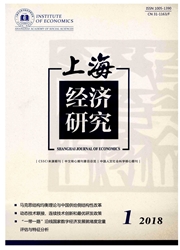

 中文摘要:
中文摘要:
理论分析表明服务进口和出口对服务业生产率的作用机制存在差异,服务进口通过行业内资源再配置效应、内生技术选择效应和竞争效应能够促进服务业生产率提升,而服务出口通过资源再配置效应、规模经济效应和技术溢出效应的综合作用方向不明确。进而采用中国服务业细分部门2004-2011年间的面板数据,在全面控制影响服务业生产率(TFP)的国内和国际因素后,实证考察了服务进口和出口对中国服务业生产率的影响差异。结果表明,在中国服务业生产率增长过程中,是服务进口(而不是服务出口)发挥了显著地促进作用,从而验证了本文的研究假设;在控制变量中,只有行业平均实际工资和资本密集度一直存在显著正向影响。鉴于服务进口和出1:7影响服务业生产率的作用机制差异和实际表现差异,当前我国更应注重服务进口的生产率提升效应,但长期来看应始终坚持服务进1:7和出口的“同时并进”发展战略。
 英文摘要:
英文摘要:
This paper analyzes the different effect mechanisms of imports and exports on productivity growth in services industry. Services import can promote productivity growth through the effects of resources reallocation within industry, endogenous technology choice and competition, while the comprehensive impact direction of services export is not clear through the effects of resources reallocation, economies of scale and technological spillovers. Using a panel data of China's services sub-sectors from 2004 to 20ll and controlling the domestic and international factors influencing services productivity (TFP), we investigate the different effects of imports and exports on productivity in services sectors. The results show that it is services imports (not export) that have played a significant role in promoting productivity growth in China's services sectors, which confirms the paper's hypotheses; in the control variables, only industry average real wages and capital intensity have a significant positive influence. Given the different mechanisms and actual performances between services imports and exports, we should pay more attention to the current productivity enhancing effects of services imports, but in the long run we should always adhere to the "go hand in hand" development strategy of services imports and exports.
 同期刊论文项目
同期刊论文项目
 同项目期刊论文
同项目期刊论文
 期刊信息
期刊信息
